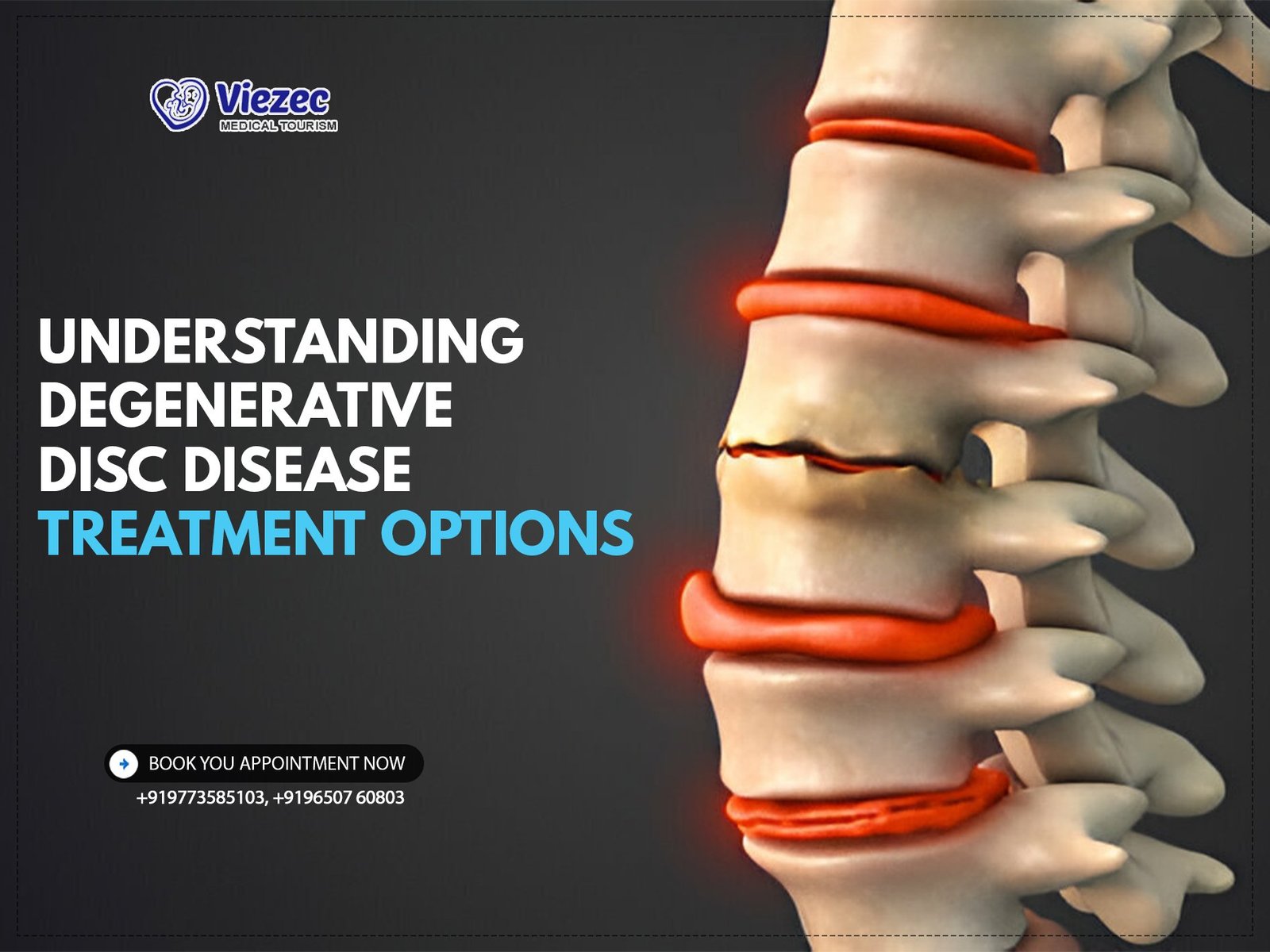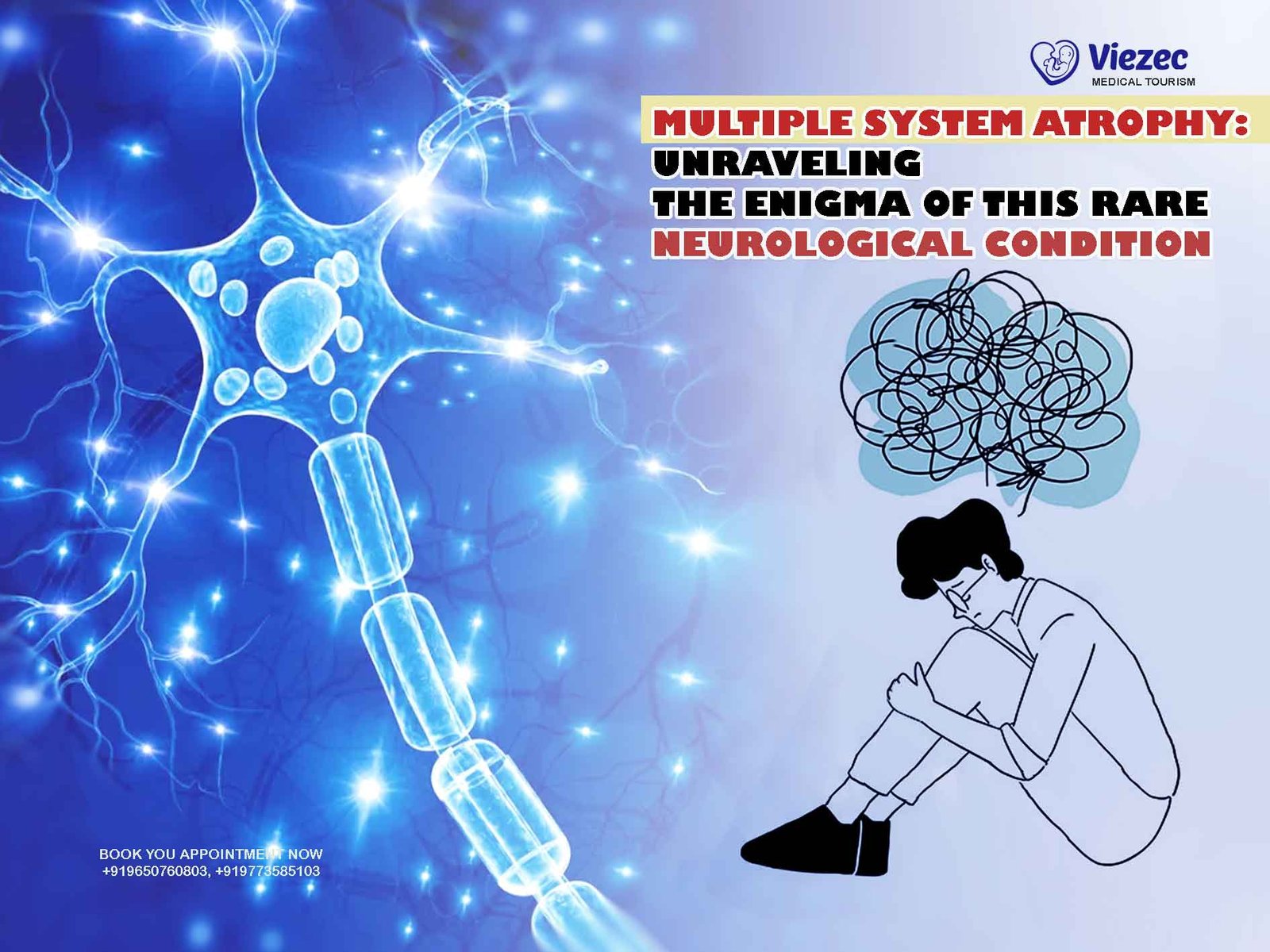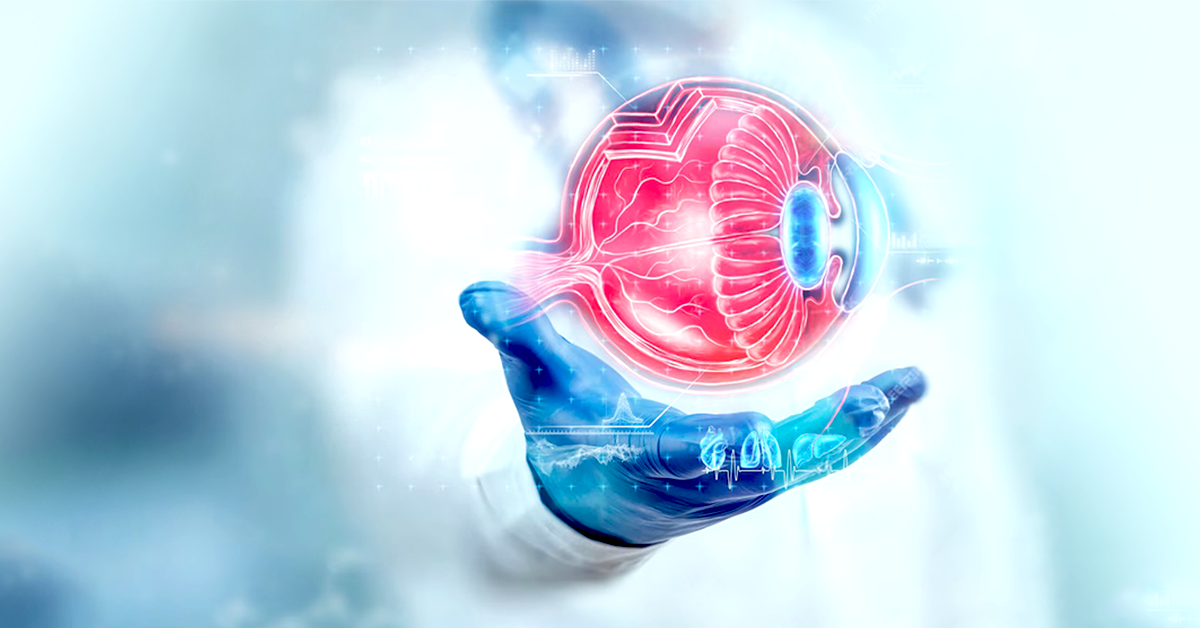Degenerative disc disease (DDD) is a condition characterized by the gradual deterioration of the intervertebral discs, which serve as cushions between the vertebrae in the spine. This condition is part of the natural aging process and can lead to pain, reduced mobility, and other complications. The discs lose their flexibility, elasticity, and shock-absorbing characteristics, making the spine less capable of handling stress and strain. This can cause the discs to bulge, herniate, or even rupture, resulting in pressure on the spinal cord and nerves. Although termed a “disease,” DDD is a common condition that many individuals experience as they age. It is important to note that while it can be painful and debilitating, it is often manageable with appropriate treatment and lifestyle modifications.
Prevalence and Demographics
Degenerative disc disease is a prevalent condition affecting a significant portion of the adult population, particularly those over the age of 40. Studies indicate that nearly everyone will experience some degree of disc degeneration as they age, although not all will develop symptoms. The prevalence of DDD increases with age, with higher rates observed in individuals in their 60s and beyond. Men and women are affected almost equally, though some studies suggest a slightly higher incidence in women. Various factors, including genetic predisposition, occupational hazards, and lifestyle choices, can influence the onset and progression of the disease. Understanding the demographics of DDD can help in identifying at-risk populations and tailoring preventive and therapeutic strategies accordingly.
Causes and Risk Factors
Several factors contribute to the development of degenerative disc disease, including age, genetics, and lifestyle choices. Aging is the primary cause, as the discs naturally lose water content and elasticity over time, making them more prone to damage. Genetic predisposition also plays a significant role, with individuals having a family history of DDD being more susceptible. Lifestyle factors such as smoking, obesity, and lack of physical activity can exacerbate disc degeneration. Occupational hazards, particularly jobs involving heavy lifting, repetitive motions, or prolonged periods of sitting, can increase the risk. Additionally, trauma or injury to the spine can accelerate the degenerative process. Understanding these causes and risk factors is crucial for developing effective prevention and treatment strategies.
Symptoms and Diagnosis
Common Symptoms
The symptoms of degenerative disc disease can vary widely, depending on the severity of the condition and the location of the affected discs. Common symptoms include chronic pain in the neck or lower back, which may radiate to the arms or legs. Patients often report a feeling of stiffness or reduced flexibility in the spine, making it difficult to bend or twist. The pain may worsen with activities such as sitting, standing, or lifting, and can sometimes improve with walking or changing positions. Other symptoms include tingling, numbness, or weakness in the limbs, indicating nerve involvement. These symptoms can significantly impact daily activities and quality of life, making timely diagnosis and treatment essential.
Diagnostic Imaging Techniques
MRI
Magnetic Resonance Imaging (MRI) is the most effective diagnostic tool for evaluating degenerative disc disease. MRI provides detailed images of the intervertebral discs, spinal cord, and surrounding soft tissues, allowing for the detection of disc degeneration, herniation, and other abnormalities. Unlike X-rays, MRI does not use ionizing radiation, making it a safer option for repeated imaging. The high-resolution images produced by MRI can reveal changes in disc height, hydration levels, and the presence of bulging or ruptured discs. This information is crucial for accurate diagnosis and the development of an appropriate treatment plan.
CT Scan
Computed Tomography (CT) scans are another valuable diagnostic tool for assessing degenerative disc disease. CT scans use X-rays to create cross-sectional images of the spine, providing detailed information about the bone structures and any changes in the discs. While not as detailed as MRI in terms of soft tissue visualization, CT scans are particularly useful for evaluating bony abnormalities, such as bone spurs or spinal stenosis. They are often used in cases where MRI is contraindicated or when additional detail about the bone anatomy is required. The images from CT scans can help guide treatment decisions and surgical planning.
X-rays
X-rays are commonly used as an initial diagnostic tool for degenerative disc disease. They provide images of the spine’s bone structures, allowing for the assessment of disc space narrowing, bone spurs, and alignment issues. While X-rays do not provide detailed images of soft tissues, they can help identify significant structural changes and rule out other conditions that may cause similar symptoms. X-rays are often used in conjunction with MRI or CT scans to provide a comprehensive evaluation of the spine. They are a quick and accessible diagnostic option, often used in the initial stages of diagnosis.
Differential Diagnosis
Differential diagnosis involves distinguishing degenerative disc disease from other conditions that may present with similar symptoms. This process is crucial to ensure accurate diagnosis and appropriate treatment. Conditions such as herniated discs, spinal stenosis, osteoarthritis, and muscle strain can mimic the symptoms of DDD. A thorough clinical evaluation, including a detailed medical history, physical examination, and diagnostic imaging, is necessary to differentiate DDD from these conditions. Identifying the correct underlying cause of symptoms is essential for developing an effective treatment plan and preventing unnecessary interventions.
Clinical Evaluation
A comprehensive clinical evaluation is a critical component of diagnosing degenerative disc disease. This involves taking a detailed medical history to identify any risk factors, previous injuries, or family history of spine-related conditions. A physical examination is conducted to assess the range of motion, strength, reflexes, and any areas of tenderness or pain in the spine. Specific maneuvers may be performed to elicit symptoms and determine the affected areas. The clinical evaluation, combined with diagnostic imaging, helps confirm the diagnosis of DDD and guides the development of an individualized treatment plan.
Conservative Treatment Options
Physical Therapy
Exercise Regimens
Physical therapy is a cornerstone of conservative treatment for degenerative disc disease. Exercise regimens tailored to the individual’s condition can help improve flexibility, strength, and stability of the spine. Core strengthening exercises, stretching routines, and low-impact aerobic activities such as swimming or walking are commonly recommended. These exercises help reduce pain, improve function, and prevent further degeneration. A physical therapist can develop a personalized exercise program that addresses the specific needs and limitations of the patient, ensuring safe and effective rehabilitation.
Manual Therapy
Manual therapy techniques, including spinal manipulation and mobilization, can provide relief for patients with degenerative disc disease. These hands-on techniques aim to improve spinal alignment, increase range of motion, and reduce pain. Manual therapy is often combined with other physical therapy modalities, such as exercise and electrical stimulation, for optimal results. Skilled therapists use their hands to apply controlled force to the affected areas, helping to restore normal function and alleviate discomfort. Manual therapy can be an effective adjunct to other conservative treatments, providing significant relief for many patients.
Pharmacological Treatments
Pain Relievers
Pain relievers are commonly used to manage the symptoms of degenerative disc disease. Over-the-counter medications such as acetaminophen and nonsteroidal anti-inflammatory drugs (NSAIDs) can help reduce pain and inflammation. For more severe pain, prescription medications such as opioids or muscle relaxants may be prescribed for short-term use. These medications can provide relief and improve function, allowing patients to participate more fully in physical therapy and other treatment modalities. It is important to use pain relievers under the guidance of a healthcare provider to minimize the risk of side effects and dependency.
Anti-inflammatory Medications
Anti-inflammatory medications play a crucial role in managing the symptoms of degenerative disc disease. NSAIDs, such as ibuprofen and naproxen, are commonly used to reduce inflammation and alleviate pain. These medications work by inhibiting the production of inflammatory chemicals in the body, providing relief from discomfort and improving mobility. In some cases, corticosteroid medications may be prescribed for short-term use to reduce severe inflammation. Anti-inflammatory medications can be an important component of a comprehensive treatment plan, helping to manage symptoms and improve quality of life.
Lifestyle Modifications
Weight Management
Maintaining a healthy weight is essential for managing degenerative disc disease. Excess weight places additional stress on the spine, accelerating disc degeneration and exacerbating symptoms. Weight management strategies, including a balanced diet and regular exercise, can help reduce this stress and improve overall spine health. A healthcare provider or dietitian can provide guidance on healthy eating habits and physical activity that are appropriate for the individual’s condition. Achieving and maintaining a healthy weight can significantly improve the outcomes of other treatment modalities and enhance overall well-being.
Ergonomics and Posture
Proper ergonomics and posture are crucial for managing degenerative disc disease and preventing further damage. Ergonomic adjustments to workstations, such as using an adjustable chair and desk, can help maintain proper spine alignment and reduce strain. Good posture, including sitting and standing with a neutral spine, can alleviate pressure on the discs and prevent worsening of symptoms. Physical therapists can provide guidance on ergonomic modifications and postural exercises to support spine health. Incorporating these changes into daily activities can significantly reduce pain and improve function.
Alternative Therapies
Acupuncture
Acupuncture is an alternative therapy that has shown promise in managing the symptoms of degenerative disc disease. This traditional Chinese medicine technique involves inserting thin needles into specific points on the body to stimulate natural pain relief and healing processes. Acupuncture can help reduce pain, improve circulation, and promote relaxation. It is often used in conjunction with other treatments, such as physical therapy and medication, to enhance overall outcomes. Many patients report significant relief from pain and improved quality of life with regular acupuncture sessions.
Chiropractic Care
Chiropractic care is another alternative therapy commonly used to manage degenerative disc disease. Chiropractors use spinal manipulation and other manual techniques to improve spinal alignment, reduce pain, and enhance function. Chiropractic care focuses on restoring normal movement patterns and reducing pressure on the discs and nerves. This therapy can be particularly effective for individuals with mechanical back pain related to DDD. Regular chiropractic adjustments, combined with lifestyle modifications and other treatments, can provide significant relief and improve overall spine health.
Minimally Invasive Procedures
Epidural Steroid Injections
Epidural steroid injections are a minimally invasive treatment option for managing the symptoms of degenerative disc disease. These injections deliver corticosteroid medication directly into the epidural space around the spinal cord and nerves, reducing inflammation and alleviating pain. Epidural steroid injections can provide significant relief, particularly for individuals with nerve root irritation or radiculopathy. The effects of these injections can last for several weeks to months, allowing patients to participate more fully in physical therapy and other rehabilitation activities. This treatment is often used in conjunction with other conservative therapies for optimal results.
Nerve Blocks
Nerve blocks are another minimally invasive procedure used to manage pain associated with degenerative disc disease. These injections deliver anesthetic medication directly to the affected nerves, temporarily blocking pain signals and providing relief. Nerve blocks can help identify the specific source of pain and determine the most effective treatment approach. They are often used in cases where other conservative treatments have not provided adequate relief. Nerve blocks can be repeated as needed to manage chronic pain and improve function, allowing patients to participate more fully in rehabilitation activities.
Radiofrequency Ablation
Radiofrequency ablation (RFA) is a minimally invasive procedure used to manage chronic pain associated with degenerative disc disease. This technique involves using radiofrequency energy to heat and destroy specific nerve fibers responsible for transmitting pain signals. RFA can provide long-lasting relief for individuals with chronic back or neck pain that has not responded to other treatments. The procedure is typically performed on an outpatient basis and has a low risk of complications. RFA can significantly improve quality of life and reduce the need for long-term medication use.
Surgical Treatment Options
Indications for Surgery
Surgery is considered for degenerative disc disease when conservative treatments have failed to provide adequate relief, and the condition significantly impacts the patient’s quality of life. Indications for surgery include persistent pain, progressive neurological deficits, and severe spinal instability. Surgery may also be necessary for individuals with significant disc herniation, spinal stenosis, or deformities that do not respond to other treatments. A thorough evaluation by a spine specialist is essential to determine the most appropriate surgical approach based on the individual’s specific condition and overall health.
Types of Surgery
Spinal Fusion
Spinal fusion is a common surgical procedure used to treat degenerative disc disease. This procedure involves joining two or more vertebrae together to eliminate motion and reduce pain. Bone grafts or metal implants are used to facilitate the fusion process, providing stability to the spine. Spinal fusion can be performed using various techniques, including anterior, posterior, or lateral approaches, depending on the location of the affected discs. While spinal fusion can provide significant relief, it also limits the natural movement of the spine and may increase the risk of adjacent segment degeneration.
Disc Replacement
Disc replacement is an alternative surgical option for managing degenerative disc disease. This procedure involves removing the damaged disc and replacing it with an artificial disc that mimics the natural movement of the spine. Disc replacement aims to preserve motion and reduce pain while maintaining the stability and flexibility of the spine. This procedure is typically performed on the cervical or lumbar spine and is considered for individuals who have not responded to conservative treatments. Disc replacement can provide excellent outcomes, with a lower risk of adjacent segment degeneration compared to spinal fusion.
Laminectomy
Laminectomy is a surgical procedure used to relieve pressure on the spinal cord and nerves caused by degenerative disc disease. This procedure involves removing a portion of the vertebra called the lamina to create more space for the spinal cord and nerves. Laminectomy can be performed alone or in combination with other procedures, such as spinal fusion or disc replacement. This surgery is often used to treat conditions such as spinal stenosis or herniated discs that cause significant nerve compression. Laminectomy can provide substantial relief from pain and neurological symptoms, improving overall function.
Risks and Complications
Surgical treatment for degenerative disc disease carries inherent risks and potential complications. These may include infection, bleeding, nerve damage, and adverse reactions to anesthesia. Specific risks depend on the type of surgery performed and the individual’s overall health. Spinal fusion carries a risk of non-union or failure of the bone to fuse, while disc replacement may involve complications such as implant dislocation or wear. Laminectomy carries a risk of spinal instability or recurrence of symptoms. It is essential for patients to discuss potential risks and benefits with their surgeon to make informed decisions about their treatment.
Recovery and Rehabilitation
Recovery from surgery for degenerative disc disease involves a combination of rest, physical therapy, and gradual return to activities. The specific recovery timeline varies depending on the type of surgery and the individual’s overall health. Physical therapy is a critical component of post-surgical rehabilitation, helping to restore strength, flexibility, and function. Patients may need to avoid certain activities, such as heavy lifting or bending, during the initial recovery period. Regular follow-up appointments with the surgeon are essential to monitor progress and address any complications. Successful recovery requires a commitment to rehabilitation and adherence to postoperative guidelines.
Emerging and Experimental Treatments
Stem Cell Therapy
Mechanism of Action
Stem cell therapy is an emerging treatment option for degenerative disc disease that aims to regenerate damaged discs and restore their function. Stem cells have the potential to differentiate into various cell types, including those that make up the intervertebral discs. By injecting stem cells into the affected discs, it is hoped that they will promote healing, reduce inflammation, and restore the disc’s natural structure and function. This regenerative approach offers a promising alternative to traditional treatments, potentially delaying or eliminating the need for surgery.
Clinical Trials and Studies
Clinical trials and studies are ongoing to evaluate the safety and efficacy of stem cell therapy for degenerative disc disease. Early results have shown promise, with some patients experiencing significant pain relief and improved function. However, more research is needed to determine the optimal types of stem cells, injection techniques, and long-term outcomes. Participation in clinical trials provides patients with access to cutting-edge treatments and contributes to the advancement of medical knowledge. It is essential to carefully evaluate the eligibility criteria and potential risks before enrolling in a clinical trial.
Success Rates and Outcomes
The success rates and outcomes of stem cell therapy for degenerative disc disease vary depending on factors such as the severity of the condition, the patient’s overall health, and the specific treatment protocol used. Some studies have reported positive results, with significant improvements in pain, function, and quality of life. However, other studies have shown mixed outcomes, highlighting the need for further research to refine the treatment approach and identify the most effective patient populations. Ongoing studies will provide valuable insights into the long-term benefits and potential limitations of stem cell therapy for DDD.
Gene Therapy
Potential Benefits
Gene therapy is an experimental treatment approach for degenerative disc disease that involves modifying or introducing genes to promote disc regeneration and repair. By targeting specific genes involved in the degenerative process, gene therapy aims to enhance the natural healing mechanisms of the intervertebral discs. Potential benefits of gene therapy include reduced inflammation, improved disc hydration, and enhanced production of extracellular matrix components. This innovative approach offers the possibility of addressing the underlying causes of DDD, rather than merely managing symptoms.
Current Research
Current research in gene therapy for degenerative disc disease is focused on identifying the most effective gene targets, delivery methods, and treatment protocols. Preclinical studies using animal models have shown promising results, with improved disc health and reduced degeneration. Human clinical trials are still in the early stages, and more research is needed to establish the safety and efficacy of gene therapy for DDD. Advances in genetic engineering and delivery technologies hold the potential to revolutionize the treatment of degenerative disc disease, offering new hope for patients with this challenging condition.
Growth Factor Therapy
Types of Growth Factors
Growth factor therapy involves the use of naturally occurring proteins that stimulate cell growth, differentiation, and repair to treat degenerative disc disease. Various growth factors, such as transforming growth factor-beta (TGF-β), bone morphogenetic proteins (BMPs), and insulin-like growth factor (IGF), have shown potential in promoting disc regeneration. These growth factors can be delivered directly to the affected discs through injections or incorporated into biomaterials for sustained release. Growth factor therapy aims to enhance the natural healing processes of the intervertebral discs, reducing pain and improving function.
Application Methods
The application methods for growth factor therapy vary depending on the specific growth factors used and the desired outcomes. Direct injection of growth factors into the affected discs is a common approach, allowing for targeted delivery and localized effects. Biomaterials, such as hydrogels or scaffolds, can be used to encapsulate growth factors and provide sustained release over time. These biomaterials can be implanted into the discs during minimally invasive procedures or surgery. The choice of application method depends on factors such as the severity of the condition, the patient’s overall health, and the specific treatment goals.
Pain Management Strategies
Chronic Pain Management
Multidisciplinary Approaches
Chronic pain management for degenerative disc disease often involves a multidisciplinary approach, combining medical, physical, and psychological interventions. This comprehensive strategy aims to address the various factors contributing to pain and improve overall function and quality of life. Medical management may include medications, such as pain relievers, anti-inflammatories, or muscle relaxants, to reduce symptoms. Physical therapy and rehabilitation programs are designed to improve strength, flexibility, and mobility. Psychological support, including cognitive-behavioral therapy (CBT) or mindfulness-based stress reduction (MBSR), can help patients cope with chronic pain and improve their mental well-being.
Psychological Support
Psychological support is a critical component of chronic pain management for individuals with degenerative disc disease. Chronic pain can significantly impact mental health, leading to anxiety, depression, and reduced quality of life. Psychological interventions, such as cognitive-behavioral therapy (CBT), can help patients develop coping strategies, manage stress, and improve their emotional resilience. Mindfulness-based stress reduction (MBSR) and other relaxation techniques can also be beneficial in reducing pain perception and enhancing overall well-being. Incorporating psychological support into a comprehensive pain management plan can improve outcomes and quality of life for patients with DDD.
Pain Relief Devices
TENS Units
Transcutaneous Electrical Nerve Stimulation (TENS) units are pain relief devices commonly used for managing the symptoms of degenerative disc disease. TENS units deliver low-voltage electrical currents to the affected areas, stimulating the nerves and reducing pain signals. These portable devices can be used at home or in conjunction with other treatments, providing non-invasive pain relief. TENS therapy can be particularly effective for individuals with chronic back or neck pain, offering a drug-free alternative to pain management. Patients can adjust the intensity and frequency of the electrical stimulation to achieve optimal relief.
Spinal Cord Stimulators
Spinal cord stimulators (SCS) are advanced pain relief devices used for managing chronic pain associated with degenerative disc disease. These devices are implanted surgically and deliver electrical impulses to the spinal cord, blocking pain signals and providing relief. SCS therapy can be highly effective for individuals who have not responded to other treatments, offering long-term pain management. The implantation procedure involves placing electrodes near the spinal cord and connecting them to a small generator implanted under the skin. Patients can control the device using a remote, adjusting the stimulation settings to achieve the desired level of pain relief.
Rehabilitation and Long-term Care
Post-treatment Rehabilitation
Physical Therapy Programs
Post-treatment rehabilitation is essential for individuals recovering from treatments for degenerative disc disease. Physical therapy programs are designed to restore strength, flexibility, and function, helping patients regain their quality of life. These programs typically include a combination of exercises, manual therapy, and modalities such as heat or ice therapy. Physical therapists work closely with patients to develop personalized rehabilitation plans that address their specific needs and goals. Adherence to these programs is crucial for successful recovery and long-term management of DDD.
Occupational Therapy
Occupational therapy plays a vital role in post-treatment rehabilitation for individuals with degenerative disc disease. Occupational therapists focus on helping patients regain independence in daily activities and improve their overall function. This may involve ergonomic assessments, adaptive equipment recommendations, and training in techniques to reduce strain on the spine. Occupational therapy can help patients return to work, hobbies, and other activities they enjoy, enhancing their quality of life. Collaboration between physical and occupational therapists ensures a comprehensive and holistic approach to rehabilitation.
Long-term Management
Monitoring and Follow-up
Long-term management of degenerative disc disease involves regular monitoring and follow-up with healthcare providers to assess the progression of the condition and the effectiveness of treatments. This may include periodic imaging studies, physical examinations, and evaluations of pain and function. Ongoing monitoring allows for early detection of any changes or complications, enabling timely intervention. Regular follow-up appointments provide an opportunity to adjust treatment plans, address any new symptoms, and ensure optimal management of the condition.
Lifestyle Adjustments
Lifestyle adjustments are crucial for the long-term management of degenerative disc disease. These may include maintaining a healthy weight, practicing good posture, and engaging in regular physical activity to support spine health. Patients should avoid activities that exacerbate symptoms and implement ergonomic modifications at home and work. Smoking cessation and stress management techniques can also contribute to overall spine health and reduce the risk of further degeneration. Adopting these lifestyle adjustments can help manage symptoms, prevent complications, and improve quality of life for individuals with DDD.
Frequently Asked Questions
What is degenerative disc disease, and what causes it?
Degenerative disc disease (DDD) is a condition characterized by the gradual deterioration of the intervertebral discs in the spine. It is primarily caused by the natural aging process, leading to loss of disc height, flexibility, and hydration. Other contributing factors include genetic predisposition, lifestyle choices, and occupational hazards. Trauma or injury to the spine can also accelerate the degenerative process.
How is degenerative disc disease diagnosed?
Degenerative disc disease is diagnosed through a combination of clinical evaluation and diagnostic imaging. A thorough medical history and physical examination help identify symptoms and risk factors. Imaging techniques such as MRI, CT scans, and X-rays provide detailed images of the spine, revealing changes in the discs and surrounding structures. These diagnostic tools help confirm the diagnosis and guide the development of an appropriate treatment plan.
What are the treatment options for degenerative disc disease?
Treatment options for degenerative disc disease range from conservative approaches to surgical interventions. Conservative treatments include physical therapy, pharmacological treatments, lifestyle modifications, and alternative therapies such as acupuncture and chiropractic care. Minimally invasive procedures, such as epidural steroid injections and radiofrequency ablation, can provide significant relief. Surgical options, including spinal fusion, disc replacement, and laminectomy, are considered for severe cases that do not respond to other treatments.
Can degenerative disc disease be prevented?
While degenerative disc disease is a natural part of aging and cannot be entirely prevented, certain lifestyle choices can reduce the risk and slow its progression. Maintaining a healthy weight, practicing good posture, staying physically active, and avoiding smoking can support spine health. Ergonomic modifications at work and home can also reduce strain on the spine. Early intervention and appropriate management can help mitigate the impact of DDD and improve quality of life.
For more information or to learn about treatment options, visit us online.









